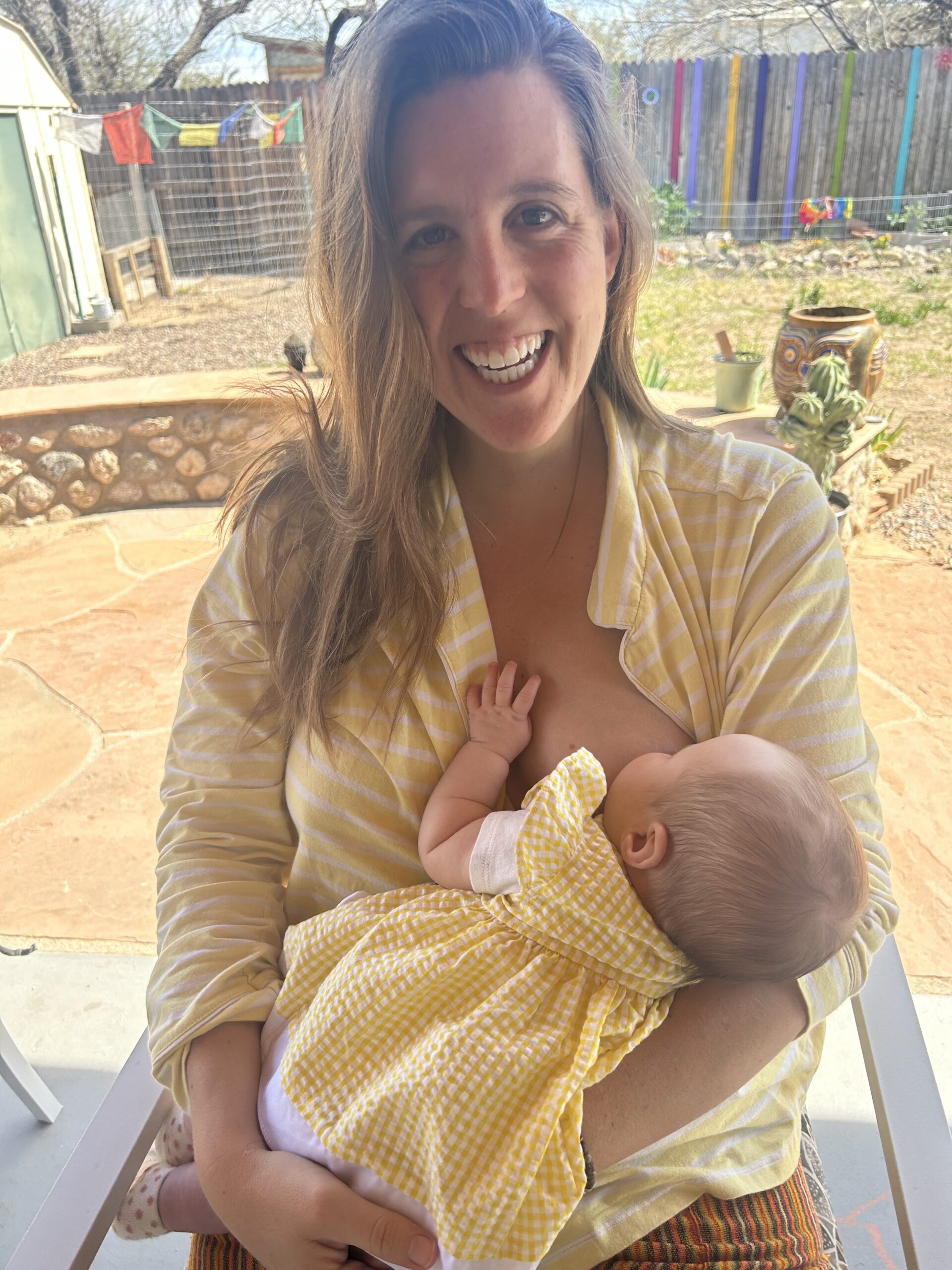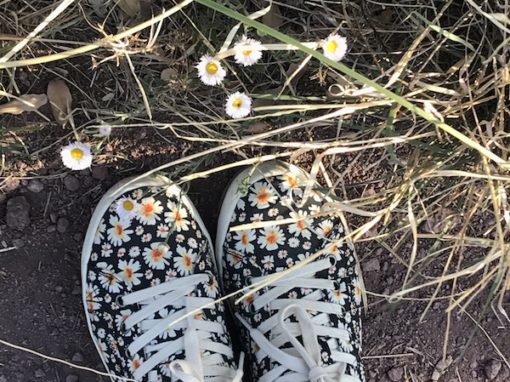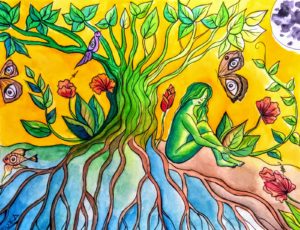“I’ve got amoebas.” The first time I found out that the little parasitic creatures had invaded my intestines, I was in Cuenca, Ecuador, where I lived for two years.
“Don’t worry,” my friend and fellow teacher had said. “They’re common. Just go to one of the little labs, pee and poop in a cup, and they’ll confirm it. If you have them, you can just head over to a pharmacy and get a pill to make them go away.”
“That’s it?” I’d questioned. “No doctors?”
“Nope, not at all,” she’d said. “It’s easy, and everyone does it every few months.” And so began my routine antibiotic popping. For about a year, every 3-4 months, when the amoebas arrived and my stomach showed their evidence, I’d go to the lab, get the results, take the pill for a few days, and all was well. Or so, I’d thought.
Taking repeated rounds of antibiotics, as more and more studies show, wreaks havoc on our systems. After researching more about the effects of these drugs, I finally decided to get a test done to see if I’d developed resistance to any common pathogens and their remedies. Turned out, I had. To quite a few, actually, including penicillin. I’d been popping so many antibiotics in an attempt to calm my gut, I’d destroyed it.
This is what led me to one of the only Ayurvedic doctor in Cuenca, a woman who worked in an office with incense, a small waterfall fountain, and vials of herbs and tinctures. She treated me in various ways. First, no more antibiotics. Whenever my stomach hurt, I turned to garlic and papaya seeds. She’d prick me with this needle meant to stimulate movement in the body. It was much larger than an acupuncture needle, but smaller than the ones of nurses everywhere. For days, I’d have little red bumps on my stomach where she’d pricked.

I began to understand a bit more about this Indian system of medicine in a bizarre way: through Spanish conversations with my Ecuadorian doctor who’d studied in Argentina. When I got the chance to go to New Delhi, India for work last semester, I knew that I’d spend my free days better understanding the system, and so I signed up for 5 classes that would ultimately shift my perspective.
Through my local team of teachers in New Delhi, I was recommended to a woman who practiced in an office that was hidden down a long alleyway, something resonant of Diagon Alley. This woman was not just any healer, though. She had practiced Ayurvedic medicine for decades, and her husband is currently the head of the Ayurvedic branch of AYUSH, the beautiful branch of the Indian health system that promotes other forms of healing: Ayurveda, Yoga, Unani (a Perso-arabic system of medicine), naturopathy (AYUSH doesn’t have an N but this one is tucked in there), Siddha (a system of medicine that balances the spirit and body), and Homeopathy.
Imagine, an entire branch of governmental health that looks at the whole picture. So much of what I saw while studying the public health system in India shocked me, but not always for anticipated reasons. I saw blood, yes. I saw women overcrowded in birthing rooms in rural India, and people with IVs in the hallways, and a different form of sanitation in some places, and doctors who worked so hard. I saw so many things that did work, and so many things I’d questioned. Regarding Ayurvedic medicine, though, our American group was curious. It’s a lifestyle medicine, in a way, but it’s anything but soft.
Ayurveda stretches back nearly 5,000 year; it is one of the oldest systems of medicine in the world, and a precursor for much of “modern” or “Western” medicine. It cannot be called alternative, or natural, or spiritual, because it is all of those things and more. Also, to say Ayurveda is alternative is false considering it was the original mainstream. I think of it as a system of understanding the elements that are within your body, your life, and how they interact with everything and everyone around them.
My first day with this teacher, we spent most of our time talking. She introduced the system of Ayurveda and its history, and said that much of what we would practice would come down to a test (made up of over 200 questions) that would determine my doshas.
There are three doshas: vata, pitta, and kapha, each one a combination of elements. When a human is conceived, the doshas of the parents, as well as any environmental factors, influence the doshas of the baby that will be born. We would dive into these in time, but that first day, more than anything, I found myself silent, listening, as I was encouraged to think about health differently.
She told me there will come a time, a moment, when you realize all you can do is wake up. In her older age, probably in her early 60s, she’d given birth to 3 children and worked as one of the only female faculty at a large university. During taht time, she’d said, she had to be smarter than the rest. Her first day, she went in and, after writing her statements in chalk on the board, realized that all of the erasers had been stolen. A few students were chuckling. There was nothing to do but talk through the lesson. The next class, she brought her own rags to erase. You always have to come prepared, she said.
While teaching, she’d met and married a man her parents had not at all approved of– the man who would become incredibly successful in the Ayurvedic world– and she found a balance of being a working mother in a society where women still do not work as much as men, and in a world where women also have more responsibilities at home. Through all of that, Ayurvedic practices, understanding what she needed and how and when, were key. It’s not just something you adopt, she’d told me, it’s how you live your life. But it has to start somewhere and “waking up is universal.”
Once you wake up, you realize you must live the best life you can. Live freely, sleep, wake up, and repeat. I’d asked if it was that simple, truly, and she said yes. “You must believe that everything happens for the right.”
That stuck with me for days. Everything happens for the right. In a world where things feel like they’re happening wrongly all over the place– hatred and lack of empathy and no desire to listen abound– and yet, she’d said something that I couldn’t quite find a way to explain to my 20 and 21-year-old students. How can one explain that everything happens in the right when there’s so much that’s wrong? I’d asked her that. She shook her head.
“You have to have belief, spirituality, faith. Faith, itself, is a god,” she’d noted, looking at me directly. “I don’t care what you believe. But believe.”

Is that enough? Belief? It’s something I still grapple with. But that was just one of many lessons she’d touch upon over the course of our sessions. We ranged in topics, all while she was completing my 200-question survey to determine my dosha make-up. One day, I’d asked her what she thought about white folks like me, and Americans, learning about and using Ayurvedic practices. “Is it ok for us to learn and to share?”
She paused, thinking through how to share what she wanted to. Then, she smiled. “Knowledge is knowledge,” she told me. Of course you can share this information. It’s here for everyone, and everyone needs to heal. “But stealing,” she cautioned, “is something else.” Then she proceeded to tell the tale of turmeric.
I’ve been reading recently how, in your country, turmeric is the next big thing, she began. Turmeric for inflammation, circulation. Turmeric can cure everything. But turmeric, she said, is nothing new. It has been around for centuries. For millennia. Any Indian mother will tell you she’ll give her child warm milk and turmeric at night. It’s part of our culture, and has been forever. We also produce most of the turmeric in the world. So for the United States to talk about it as if some new thing was discovered, that, my dear, is stealing.

She told me a similar story about Basmati rice, also an Indian product and something that was grown and consumed throughout the country. Seen as part of national heritage, this long-grained rice, originally grown in the Punjab region, was part of almost every meal. But a Texas company, Ricetec, filed for and received a patent for various strains of Basmati rice they had developed in the States, and were marketing as forms of Basmati. My teacher told me something as small as rice is not small, and there were legal battles, eventually settled with a narrower patent, that marked this anti-globalization trend. Where is that fine line–as thin, perhaps, as a grain of rice– between globalization and appropriation?
From belief to appropriation, we would talk about the practice of theories. There were not answers given that could easily be bottled up and sold as a HOW TO manual. She told me about traveling alone as an Indian woman and how many people had doubted her ability. Once, I was in Hungary, she’d said. I was there alone, giving a conference, and one of the men I met came up to me, all concerned. He asked me, “Aren’t you nervous?” Nervous, I’d asked. Why would I be nervous. “You’re here, alone…”
“But what about you? You’re here, alone, too,” she’d replied with a smile.
“But I’m not your family, your friends,” he’d started, as if delivering some ominous warning of what fate was to become a woman traveling solo. Bah, she’d swatted away at the air between them. “You’re human. I’m human. Human to human, we watch out for each other, and no one is left alone. ”
When we travel, for work, for play, we are blessed with people who come into our lives and sprinkle wisdom, stories, perspectives. All that we can do is hope that we gain enough perspectives to illuminate what before was blind to us. I can never truly know what it’s like to be an Indian mother feeding her child warm milk with turmeric, nor what courage it took to be one of the only women teaching a form of medicine at a large university. But in the trying–in the learning to empathize–there is growth. There is compassion. There is rightness. There is soulful health.
*The quotes are direct quotes written down. The conversation not in quotes is paraphrased from memory.





Elizabeth Grieco Cunningham
March 31, 2019 at 7:10 pm
🙏🏼☀️